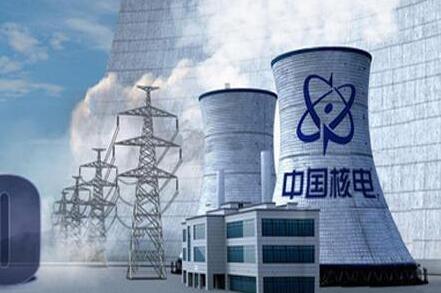29
2018
-
08
China nuclear power waiting to restart
分(fēn)类:
Industry News
China has not approved the approval of conventional nuclear power projects for more than two and a half years. The successful grid connection of three third-generation nuclear power units for the first time will prompt the door to restart nuclear power to be opened soon?
At 9:50 on August 17, Haiyang Nuclear Power Unit 1 of the State Power Investment Corporation in Shandong was successfully connected to the grid for power generation. After being connected to the grid, the unit will enter the state of trial operation with load, and continue to carry out load test, transient test and other related test items to prepare for the next commercial operation.
According to relevant reports in the Economic Herald, Haiyang Nuclear Power Plant is a landmark project for the introduction, digestion and absorption of my country's nuclear power AP1000 third-generation nuclear power technology, and undertakes the important task of China's nuclear power autonomy. After the Haiyang Nuclear Power Plant is completed, it will become China's largest nuclear power generation project so far.
The reporter learned that on June 29 this year, China General Nuclear Power Group Taishan Nuclear Power Unit No. 1 announced the success of grid-connected power generation. This is the world’s first grid-connected EPR third-generation nuclear power unit; the next day, the world’s first AP1000 unit-Sanmen Nuclear Power Unit 1 was successfully connected to the grid for the first time. Therefore, Haiyang Nuclear Power Unit 1 is the third third-generation nuclear power unit to be connected to the grid for the first time this year. Its successful grid-connected power generation further verifies the feasibility and maturity of the AP1000 third-generation nuclear power technology, laying a good foundation for the subsequent approval of nuclear power projects. .
Immediately afterwards, the China National Nuclear Corporation's Sanmen Nuclear Power Unit 2 reached a critical state for the first time at 12:07 noon, and the unit officially entered the state of operation with power.
Previously, China's nuclear power was at a standstill. Now three third-generation nuclear power units have been successfully connected to the grid for the first time. One step away from the official commissioning of power generation, will the door to China's nuclear power restart soon be opened?
The tortuous road of third-generation nuclear power
Since 2003, China has started bidding for third-generation nuclear power technologies worldwide. Until November 2006, AP1000 technology won the bid and was confirmed as the mainstream technology route for China's nuclear power development in the future.
Since then, China has established the National Nuclear Power Technology Corporation (hereinafter referred to as State Nuclear Technology) to accept the third-generation advanced nuclear power technology, implement related engineering design and project management, and hope to innovate through this, and then form a Chinese nuclear power technology brand.
The first batch of 4 units using AP1000 technology are Zhejiang Sanmen Nuclear Power Unit 1 and 2 and Shandong Haiyang Nuclear Power Unit 1 and 2 respectively. On March 31, 2009, Unit 1 of the Sanmen Nuclear Power Plant began pouring the first tank of concrete for the nuclear island, which became the world's first AP1000 nuclear power unit. According to the project plan, the construction period is approximately 56 months, and the unit should be completed and put into operation in 2013.
However, due to the first application of the new technology, the construction process of the project was not smooth, and the main pump, blasting valve and other key equipment were all problems. After many tests and improvements, until October 29, 2015, Sina Nuclear Technology and Westinghouse finally announced that the final performance test and post-test inspection of the main pump of the first AP1000 nuclear power unit were successfully completed.
The equipment problem of AP1000 also caused the industry to question the advanced technology of AP1000 and the nuclear power manufacturing capacity of the United States. When will it be put into production? It has become the number one question often asked by the outside world for the staff of the State Nuclear Technology Corporation and the construction personnel of Sanmen Nuclear Power Unit 1.
After several years of delays in production, China Power Investment Corporation and State Nuclear Technology officially announced their merger to become the State Power Investment Group, and State Nuclear Technology became a secondary unit of State Power Investment. The failure of the AP1000 unit to be put into production on schedule was also one of the important reasons for the merger of China National Nuclear Technology.
More importantly, the third-generation nuclear power technology "Hualong One" independently developed by China was formally proposed during this period. This technology is the collective term for the integration of the two technologies of China National Nuclear Corporation ACP1000 and China General Nuclear Power ACPR1000+. The demonstration project is already under construction.
When "Hualong No. 1" was first proposed, its positioning was to "export nuclear power technology to foreign countries", but now, the two companies are pushing it to be able to mass-build in China. This means that the "Hualong One" technology will become a market competitor for AP1000. There are even nuclear power plants that originally planned to use AP1000 to switch to the "Hualong One" technology, such as the Zhangzhou Nuclear Power Plant in Fujian.
What makes AP1000's technical position even more embarrassing is that in March 2017, the provider of AP1000 technology-Westinghouse announced bankruptcy and reorganization, and the corresponding debts and liabilities were transferred to the parent company Toshiba.
Now, both Sanmen Nuclear Power Unit 1 and Haiyang Nuclear Power Unit 1 have achieved grid-connected power generation for the first time, and the third-generation AP1000 nuclear power technology has finally "saved the moon and the moon."
In fact, the EPR technology designed by French Areva was introduced to China together with AP1000. The Guangdong Taishan nuclear power project using this technology also started construction in 2009 and was originally planned to be connected to the grid for power generation in 2014. However, because it adopted the method of buying capacity and did not involve the introduction of technology and subsequent applications in other nuclear power projects, although it was delayed for four years, it did not cause such great doubts and concerns like the AP1000 unit.
When to restart?
On August 9, the General Office of the State Council issued the "Guiding Opinions on Strengthening the Standardization of Nuclear Power" (hereinafter referred to as the "Guiding Opinions"). The relevant person in charge of the Science and Technology Department of the National Energy Administration emphasized the rapid development of the nuclear power industry when interpreting the "Guiding Opinions", and the nuclear power standardization work has also ushered in an important period of opportunity and a key window period. The formulation of this standard is of far-reaching significance. It can enhance the international influence of my country's nuclear power standards and accelerate the pace of China's nuclear power "going global".
He Yu, chairman of China General Nuclear Power Corporation, also said that formulating and exporting Chinese standards is the only way for my country to move from a "nuclear power country" to a "nuclear power country."
Although the current third-generation nuclear power units have been successfully connected to the grid for the first time, this is an important milestone in China's nuclear power market, but some people have pointed out that China's nuclear power project expansion ambitions cannot proceed as planned. Although many new projects have been launched, it is clear that the project continues to slow down. The most obvious sign is the lack of approval for new projects.
According to relevant analysis, after entering 2018, the domestic nuclear power development environment predicts: "The best time for the approval of new nuclear power projects is three years ago, which is the first year of the 13th Five-Year Plan-2016, followed by now."
Many people in the industry believe that China's nuclear power development is showing a positive trend, and the restart is affirmative, but the specific time can only wait for the opinions of the high level of the country.
Previously, the industry generally believed that the Sanmen nuclear power unit would not be put into production, and it would be difficult for China to restart the construction of new nuclear power projects.
Now Sanmen No. 1 unit has been successfully connected to the grid for the first time. Many securities companies have stated that nuclear power will be restarted soon.
Guosen Securities stated that the restart of AP1000 nuclear power mainly depends on Sanmen No. 1 unit. After Sanmen No. 1 has the conditions for commercial operation, subsequent AP1000 units will be eligible for approval; while Hualong No. 1 is to make full use of the existing design technology and equipment manufacturing system to make progress. The third-generation nuclear power technology formed by the development of the new type of nuclear power technology is mature and has the conditions for mass construction. It is expected that nuclear power will restart soon.
Guosen Securities analyst He Zean believes that 2018 is expected to be the year of nuclear power restart after the 2011 Fukushima nuclear accident. In the long run, the country’s attitude towards nuclear power development is positive and clear, and nuclear power is trending upward. Offshore nuclear power + nuclear waste reprocessing + inland nuclear power + nuclear power exports expand the trillions of growth space.
Guotai Junan Securities also pointed out that the third-generation nuclear power Yangjiang No. 5 unit has the conditions for commercial operation. The world's first AP1000 and EPR third-generation nuclear power have been connected to the grid for power generation, and subsequent nuclear power approvals are expected to speed up.
Recently, China and Russia signed another big order in the field of nuclear energy. The total contract value exceeds 20 billion yuan, and the total project cost exceeds 100 billion yuan. China's nuclear power industry has taken a step forward to "go global". Insiders said that the above-mentioned contract signed by China and Russia actually means the restart of China's new nuclear power projects.
According to the power industry weekly report issued by Ping An Securities, the voice of nuclear power is increasing, but at the same time it reminds investors that “policy advancement is not as expected, and the restart of nuclear power approval still has greater policy uncertainty.”
This article is transferred from Energy Magazine


相关新(xīn)闻

